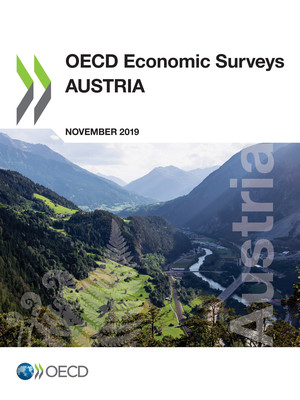This Survey is published on the responsibility of the Economic and Development Review Committee of the OECD, which is charged with the examination of the economic situation of member countries.
The economic situation and policies of Austria were reviewed by the Committee on 03 October 2019. The draft report was then revised in the light of the discussions and given final approval as the agreed report of the whole Committee on 18 October 2019.
The Secretariat’s draft report was prepared for the Committee by Rauf Gönenç and Dennis Dlugosch under the supervision of Sebastian Barnes. Statistical research assistance was provided by Eun Jung Kim and editorial assistance by Heloise Wickramanayake. The Survey also benefitted from contributions by Selçuk Gül and Aleksandra Paciorek.
The previous Survey of Austria was issued in July 2017.
Information about the latest as well as previous Surveys and more information about how Surveys are prepared is available at http://www.oecd.org/eco/surveys.
Metadata, Legal and Rights
https://doi.org/10.1787/22f8383a-en
© OECD 2019
The use of this work, whether digital or print, is governed by the Terms and Conditions to be found at http://www.oecd.org/termsandconditions.


